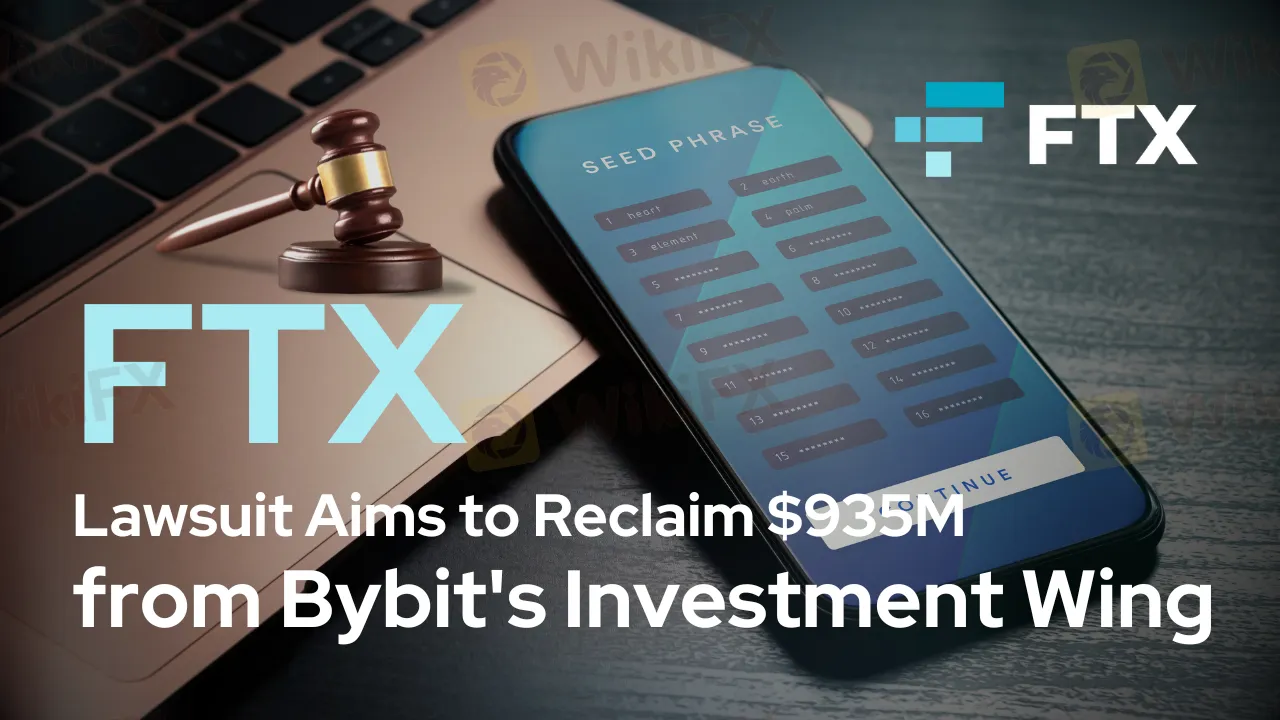简体中文
繁體中文
English
Pусский
日本語
ภาษาไทย
Tiếng Việt
Bahasa Indonesia
Español
हिन्दी
Filippiiniläinen
Français
Deutsch
Português
Türkçe
한국어
العربية
FTX Lawsuit Aims to Reclaim $935M from Bybit's Investment Wing
Abstract:In the latest twist of the FTX bankruptcy saga, a lawsuit seeks to recover $935 million transferred to Bybit's Mirana Corp, alleging fraudulent intent to defraud creditors. The case highlights significant disputes and strategies for asset recovery in the complex world of cryptocurrency.

In a significant development in the ongoing FTX bankruptcy saga, the entities responsible for managing the FTX bankruptcy process have initiated a lawsuit with the aim of recouping $935 million. These funds were allegedly transferred under dubious circumstances to Mirana Corp, the investment arm of the cryptocurrency platform Bybit, among others, just prior to FTX's Chapter 11 filing in November 2022. This move marks a new chapter in the complex FTX case, which continues to unfold with various twists and turns.
Key Allegations in the Lawsuit
The core of the lawsuit revolves around claims that Mirana Corp leveraged its “VIP” status to receive a significant portion of the $935 million transferred shortly before FTX's bankruptcy filing. This action is described as an attempt “to hinder, delay, or defraud FTX.coms current or future creditors,” a serious accusation that underscores the high stakes involved in this case. The lawsuit details that Mirana Corp received assets worth approximately $837.8 million, while Time Research, another entity, received around $48 million.
FTX's Strategy for Asset Recovery
FTX's bankruptcy managers argue that the transfers made to Mirana Corp, Time Research, and certain individuals were fraudulent and thus should be invalidated under Section 548(a)(1)(A) of the Bankruptcy Code. The pursuit to reclaim the full amount, including interest, is a strategic move aimed at bolstering the bankruptcy estates of the debtors.
Dispute Over FTX Assets Held by Bybit
Adding to the complexity, the lawsuit alleges that Bybit, the crypto exchange platform, has been refusing to process transfer requests from FTX debtors. In a controversial move, Bybit reportedly demanded the release of about $20 million that Mirana Corp was unable to withdraw before FTX halted transactions. According to the lawsuit, FTX controls assets worth $125 million held at Bybit, leading to a standoff where Bybit is accused of “holding these assets hostage.”
Legal Recourse and the Road Ahead
To address this deadlock, FTX bankruptcy managers are seeking legal enforcement under the Bankruptcy Code to ensure the transfer of funds to the debtors' estate. This legal approach signifies their determination to navigate through the bankruptcy process and recover lost assets.
As the FTX case continues to evolve, with its multiple layers and significant financial implications, it remains a focal point in the cryptocurrency industry. This latest lawsuit is a critical step in the ongoing efforts to unravel the complex web of transactions and holdings that marked the FTX collapse. Stay updated with the latest news and developments in this high-profile bankruptcy case.

Disclaimer:
The views in this article only represent the author's personal views, and do not constitute investment advice on this platform. This platform does not guarantee the accuracy, completeness and timeliness of the information in the article, and will not be liable for any loss caused by the use of or reliance on the information in the article.
Read more

Authorities Alert: MAS Impersonation Scam Hits Singapore
MAS scam alert: Scammers impersonate officials, causing $614K losses in Singapore since March 2025. Learn how to spot and avoid this impersonation scam.

Billboard Warns of Crypto Scams Using Its Name – Stay Alert!
Billboard warns against fake crypto scams using its brand. Learn how to spot fraud and protect yourself from fake promotions.

Rising WhatsApp Scams Highlight Need for Stronger User Protections
UK consumers lose £2,437 on average to WhatsApp scams. Revolut demands stricter verification and AI monitoring to combat rising fraud on Meta platforms.

Interactive Brokers Launches Forecast Contracts in Canada for Market Predictions
Interactive Brokers introduces Forecast Contracts in Canada, enabling investors to trade on economic, political, and climate outcomes. Manage risk with ease.
WikiFX Broker
Latest News
The Withdrawal Trap: How Scam Brokers Lure Victims into Paying More
FCA to Investors: Think Twice Before Trusting These Brokers
Trump\s tariffs: How could they affect the UK and your money
Trump gambles it all on global tariffs he\s wanted for decades
TradingView Brings Live Market Charts to Telegram Users with New Mini App
Trump tariffs: How will India navigate a world on the brink of a trade war?
Interactive Brokers Launches Forecast Contracts in Canada for Market Predictions
Authorities Alert: MAS Impersonation Scam Hits Singapore
Stocks fall again as Trump tariff jitters continue
IG Group Acquires Freetrade for £160M to Expand UK Investment Market
Currency Calculator







